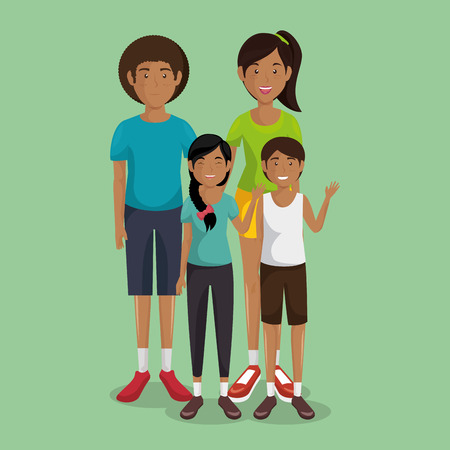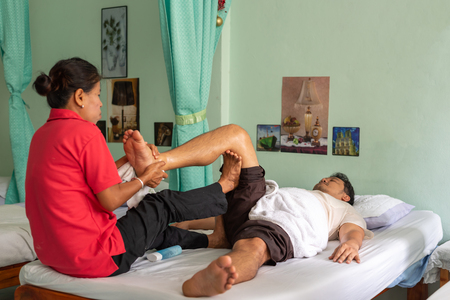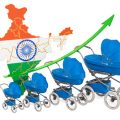Introduction to Spinal Cord Injuries and Indian Perspectives
Spinal cord injuries (SCI) are a significant health concern in India, affecting thousands of individuals each year due to road accidents, falls, and workplace mishaps. The prevalence of SCI is particularly notable in both urban and rural settings, where access to immediate and advanced medical care can be limited. In Indian communities, the approach to health and healing is deeply rooted in age-old traditions, family support systems, and holistic well-being. Many people believe that true recovery involves not just physical rehabilitation but also emotional, mental, and spiritual balance. As a result, traditional Indian healing methods play an essential role in the rehabilitation journey for those with spinal cord injuries. These methods are guided by philosophies such as Ayurveda and Yoga, which emphasize harmony between body, mind, and spirit—a perspective that continues to influence how families and caregivers support individuals living with SCI across India.
Ayurvedic Practices for Nerve Healing
Ayurveda, the ancient Indian system of medicine, offers a holistic approach to spinal cord injury rehabilitation. Rooted in the principles of balancing body energies or ‘doshas’, Ayurveda focuses on restoring harmony and promoting self-healing. In the context of nerve healing and spinal injuries, several time-tested Ayurvedic therapies are embraced by practitioners across India.
Abhyanga: Therapeutic Massage for Spinal Health
Abhyanga, a warm oil massage using medicated herbal oils, is a cornerstone therapy for nervous system rejuvenation in Ayurveda. The gentle yet firm strokes stimulate blood flow and soothe inflamed nerves, while specific oils like Mahanarayan Tailam or Bala Ashwagandha oil are chosen based on individual constitution. This treatment not only reduces pain and stiffness but also promotes relaxation and improved mobility.
Panchakarma: Detoxification and Rejuvenation
Panchakarma is a series of cleansing procedures aimed at detoxifying the body and rejuvenating tissues. For those recovering from spinal cord injuries, therapies such as Basti (medicated enema) play a significant role in nourishing the nervous system. Basti uses herbal decoctions and oils that penetrate deeply to repair damaged nerves and reduce inflammation. Other Panchakarma modalities may be tailored according to the patient’s needs under an experienced Ayurvedic doctor’s guidance.
Herbal Remedies for Nerve Repair
Ayurveda prescribes various herbs known for their neuroprotective properties. These include Ashwagandha, Brahmi, Shankhpushpi, and Guduchi—each believed to strengthen nerves, promote healing, and reduce oxidative stress. Herbal formulations can be administered as powders (churna), tablets (vati), decoctions (kwath), or medicated oils depending on individual assessment.
Common Ayurvedic Herbs for Spinal Cord Injury
| Herb Name | Main Benefit | Traditional Usage Form |
|---|---|---|
| Ashwagandha | Nerve strength & regeneration | Powder, Tablets, Oil |
| Brahmi | Cognitive support & nerve repair | Syrup, Oil, Tablets |
| Shankhpushpi | Mental calmness & neuroprotection | Tonic, Syrup |
| Guduchi | Anti-inflammatory & immune boosting | Decoction, Powder |
Dietary Recommendations for Nerve Healing
Ayurveda emphasizes sattvic (pure) foods that nourish the nervous system. Warm milk with turmeric, ghee (clarified butter), almonds soaked overnight, fresh seasonal fruits, and green leafy vegetables are highly recommended. Spices like ginger, cumin, and fennel help improve digestion and absorption of nutrients vital for nerve repair.
A Sample Sattvic Diet Plan for Spinal Rehabilitation:
| Meal Time | Sattvic Food Suggestions |
|---|---|
| Morning | Warm milk with turmeric; soaked almonds; seasonal fruits like papaya or guava |
| Noon (Lunch) | Rice/roti with moong dal (split yellow lentils); steamed greens; carrot-beet salad; a teaspoon of ghee |
| Evening Snack | Coconut water; roasted chickpeas; fruit chaat with pomegranate and apple cubes |
| Dinner | Lauki (bottle gourd) curry; khichdi (rice-lentil porridge); lightly spiced vegetable soup with ginger and cumin seeds |
The integration of these Ayurvedic practices under qualified guidance can significantly aid in nerve healing and improve quality of life for individuals living with spinal cord injuries.

3. Yoga and Pranayama for Rehabilitation
In the heart of traditional Indian healing, yoga and pranayama hold a respected place, especially in the journey of spinal cord injury rehabilitation. For elderly individuals and those on the path of gentle recovery, these ancient practices offer much more than physical movement—they nurture the mind, body, and spirit with compassion and patience.
The Role of Yoga Asanas in Gentle Healing
Yoga asanas (postures) are renowned across India for their capacity to improve flexibility, stability, and strength without causing undue strain. For seniors or anyone regaining mobility after a spinal cord injury, simple asanas like Tadasana (Mountain Pose), Bhujangasana (Cobra Pose), and Setu Bandhasana (Bridge Pose) can be adapted under expert guidance. These movements promote circulation to injured areas, help maintain muscle tone, and encourage a sense of accomplishment—crucial for emotional well-being during slow recovery.
Building Resilience with Pranayama
Pranayama, or yogic breathing techniques, are integral to Indian wellness traditions. Exercises such as Anulom Vilom (alternate nostril breathing) and Bhramari (bee breath) help regulate the nervous system, reduce stress levels, and enhance lung capacity. For elders and convalescents, regular practice of pranayama gently increases resilience by calming the mind and supporting the body’s natural healing responses—making it easier to cope with pain or immobility.
Cultural Context and Support
Within many Indian families, yoga is seen not just as exercise but as a way of life. Community support—whether from family members or local yoga groups—often plays a vital role in motivating seniors to participate regularly. The slow pace and mindful approach of yoga align beautifully with the Indian value of “shanti” (peace), creating an environment where gradual progress is celebrated.
By integrating yoga asanas and pranayama into rehabilitation routines, India’s elderly and recovering population can find hope and empowerment on their unique healing journeys—embracing tradition while moving forward at their own comfortable rhythm.
4. Traditional Marma Therapy and its Benefits
Marma Chikitsa, also known as Marma Therapy, is a vital energy points therapy rooted deeply in the ancient traditions of Ayurveda. This healing method, especially prominent in South Indian states like Kerala and Tamil Nadu, focuses on activating specific points on the body called “marma points.” These are believed to be intersections of life force (prana), where physical and energetic pathways meet. For individuals recovering from spinal cord injuries, Marma Therapy offers a gentle yet powerful approach to both rehabilitation and pain management.
Understanding Marma Chikitsa
In traditional Indian medicine, there are 107 key marma points distributed throughout the body. Each point corresponds to particular organs, tissues, or bodily functions. By applying soft pressure or therapeutic oils to these points, practitioners aim to unblock energy flow, enhance circulation, and promote natural healing responses. In the context of spinal cord injury rehabilitation, Marma Therapy is utilized to reduce inflammation, alleviate nerve pain, and restore mobility in affected areas.
Benefits of Marma Therapy for Spinal Cord Injury
| Benefit | Description |
|---|---|
| Pain Relief | Stimulates nerve endings at marma points to release endorphins and reduce chronic pain. |
| Improved Mobility | Supports muscle relaxation and flexibility around injured areas for better movement. |
| Enhanced Circulation | Promotes blood flow to affected tissues, helping with swelling and tissue repair. |
| Mental Wellbeing | Reduces stress and anxiety by balancing prana (life force) through mindful touch. |
| Holistic Recovery | Aims for overall rejuvenation by integrating body, mind, and spirit healing practices. |
Marma Therapy in Indian Rehabilitation Centers
Many Indian rehabilitation centers now integrate Marma Chikitsa into comprehensive treatment plans for spinal cord injury patients. Sessions are typically personalized after detailed assessment by skilled therapists. Often combined with other traditional modalities such as yoga or herbal remedies, Marma Therapy supports slow and sustainable recovery tailored to each individual’s unique needs. Families find comfort in this gentle approach rooted in Indian wisdom—one that honours both physical healing and emotional resilience on the journey back to wellbeing.
5. Role of Family and Community Support in Healing
In the journey of spinal cord injury rehabilitation, the support from family and the wider community holds a special significance in India. Traditional Indian healing methods recognise that recovery is not just an individual effort, but a collective responsibility rooted deeply in cultural values. The presence of family members during the rehabilitation process provides emotional strength, encouragement, and practical assistance, which are essential for holistic healing.
The Power of Collective Caregiving
Indian families are often large and closely knit, with multiple generations living together or maintaining strong connections. In such settings, caregiving responsibilities are shared among family members, ensuring that the injured person receives constant attention and care. This collective approach helps distribute tasks such as assisting with daily activities, providing traditional therapies like gentle massages, preparing nourishing meals according to Ayurveda, and offering companionship during meditation or prayer sessions.
Community-Based Rehabilitation: A Cultural Tradition
Beyond the immediate family, communities in India play a vital role through local support groups, religious organisations, and neighbourhood networks. Many villages and urban localities have informal systems where community members come forward to help those in need, reflecting the spirit of sahyog (cooperation) and seva (selfless service). Community-based rehabilitation camps—often organised by charitable trusts or spiritual leaders—offer physiotherapy sessions, yoga classes, and Ayurvedic consultations at little or no cost. These efforts not only aid physical recovery but also foster a sense of belonging and motivation.
Emotional Well-Being Through Connection
Family involvement goes beyond physical care; it addresses the emotional well-being of the patient. Regular interactions with loved ones help reduce feelings of isolation and depression that may arise after a spinal cord injury. Participation in festivals, rituals, and everyday conversations keeps patients mentally engaged and connected to their roots.
A Tradition That Heals Holistically
In essence, traditional Indian approaches to spinal cord injury rehabilitation emphasise that healing is most effective when surrounded by love, compassion, and communal support. The values of respect for elders, interdependence, and harmony within the family system continue to be powerful forces driving recovery for many Indians facing spinal injuries.
6. Integrating Modern Medicine with Traditional Methods
India’s rich heritage of healing offers a unique landscape where age-old wisdom and contemporary medical science can come together for the benefit of those recovering from spinal cord injuries. Rather than viewing allopathy (modern Western medicine) and traditional Indian therapies as separate or competing approaches, the trend is increasingly toward a complementary model that leverages the strengths of both systems.
The Power of Collaboration
Allopathic treatments, including advanced surgical techniques, physiotherapy, and pharmaceutical management, are often essential in the acute phase of spinal cord injury. However, many individuals find their recovery journey becomes more holistic and meaningful when traditional Indian practices—such as Ayurveda, Yoga therapy, and Panchakarma—are integrated into their rehabilitation plan. These methods address not only physical symptoms but also emotional balance, stress reduction, and spiritual well-being.
Personalised Healing Pathways
Indian families traditionally value personalised care rooted in community and compassion. By working closely with allopathic doctors and experienced traditional healers, patients can craft a recovery pathway that honours both scientific advancements and cultural wisdom. For example, an urban rehabilitation centre in Mumbai might offer cutting-edge physiotherapy alongside Ayurvedic massage (Abhyanga) and meditation sessions. In rural settings, local vaidyas (healers) collaborate with visiting neurologists to ensure continuity of care.
Respecting Cultural Contexts
Successful integration depends on cultural sensitivity and open communication between practitioners from both worlds. It’s essential that all team members respect each other’s knowledge systems and prioritise patient safety above all. This synergy can be particularly empowering for elders and family caregivers who feel comforted by familiar healing traditions during challenging times.
The Future of Holistic Rehabilitation in India
As awareness grows about the potential of combining modern medicine with Indian healing traditions, more hospitals and wellness centres are developing multidisciplinary rehabilitation programmes. Research initiatives are also underway to scientifically validate time-honoured practices like Yoga postures for spinal strength or herbal remedies for inflammation control. Ultimately, this integrative approach reflects the Indian spirit of ‘Vasudhaiva Kutumbakam’—the world is one family—where diverse knowledge systems unite for the greater good.


